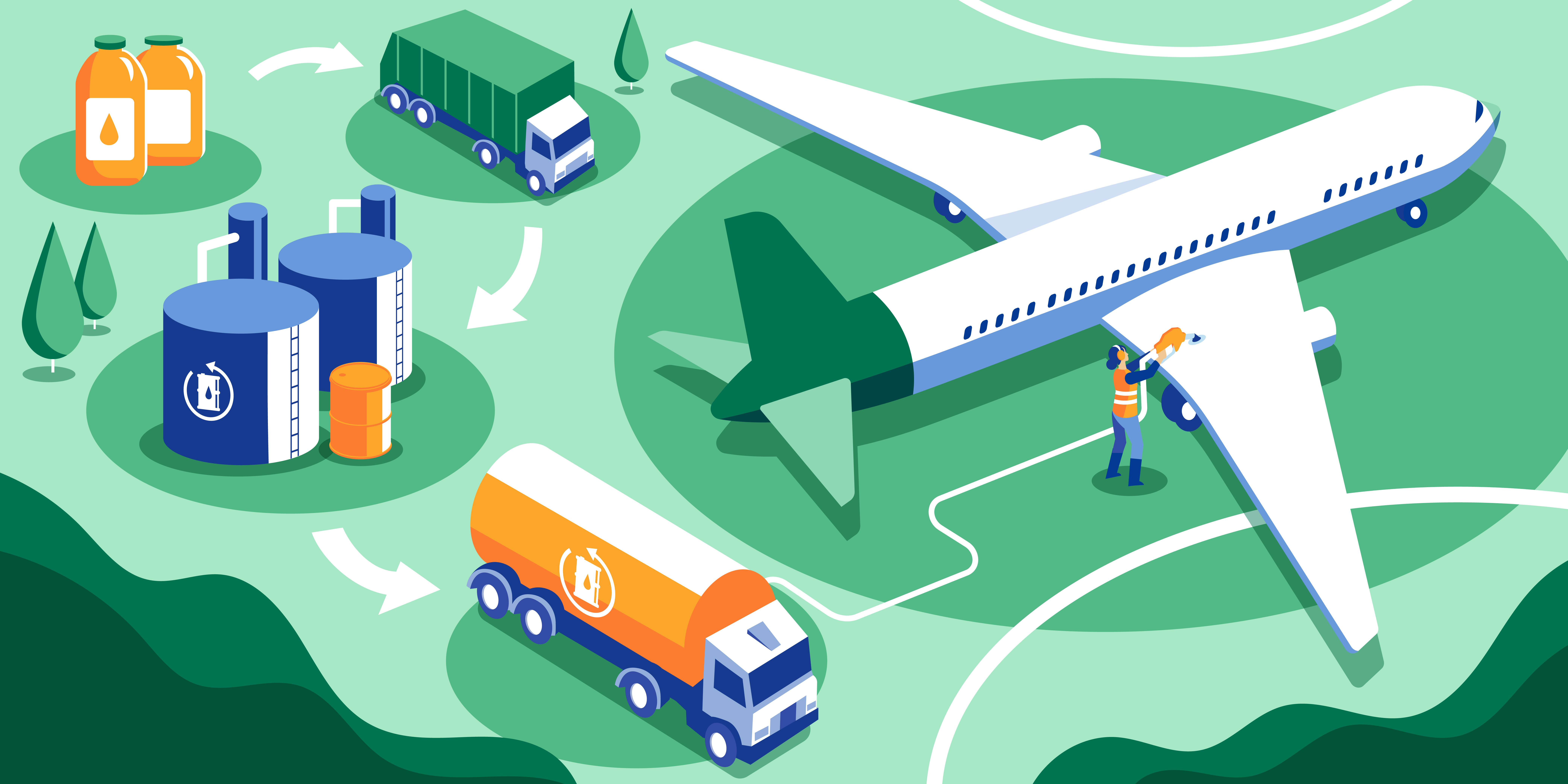
Aviation
6 minute read
Reducing emissions from aviation – what to expect in the next 5 years
The aviation industry has committed to reducing its reliance on fossil fuel, but the question is, can it pick up the pace fast enough?
According to predictions released by the International Air Transport Association (IATA) in June 2025, sustainable aviation fuel (SAF) production is expected to grow to two million tons in 2025, accounting for 0.7% of airline fuel use. SAF production will double from the 1 Mt produced in 2024, but production needs an exponential expansion needed for achieving the aviation sector’s net-zero carbon emissions target by 2050.
Although reducing emissions from aviation still demands enormous effort, momentum is clearly building — with the ReFuelEU and UK SAF mandates coming into force at the start of 2025. Moreover, airlines, airports, aircraft manufacturers, fuel producers and governments have committed to transitioning away from fossil fuels.
Sustainable aviation fuels, innovative technologies, and strong regulation will be key elements in helping the industry achieve this transition – with that, developments such as new aircraft concepts and engines are in the making, but these innovations will not answer the immediate need to cut emissions.
SAF takes the spotlight
The spotlight in the next five years is going to be on increasing demand and production of SAF, a drop-in solution which helps the aviation industry to reduce its reliance on fossil fuel and related carbon emissions straight away.
The immediate benefits of SAF are widely acknowledged, but the real challenge will be to increase and meet the demand for SAF – something that Neste, the leading producer of sustainable aviation fuel, is well aware of. Neste has been producing SAF since 2011 and has reached a SAF production capability of 1.5 million tons per year thanks to the expansion of its renewables refinery in Singapore and modification of its Rotterdam renewables refinery. The company’s annual SAF production capability is expected to expand further in 2027.
“We are working on expanding our Rotterdam refinery and increasing our global SAF production capability to 2.2 million tons per annum, which will enable our customers to significantly ramp up SAF usage to reduce aviation emissions," says Carl Nyberg, Senior Vice President, Commercial, Renewable Products at Neste.
More producers entering the field
Alongside established producers such as Neste there is now also a surge of new players in the renewable fuels market and an increasing number of airlines using or engaging in SAF collaborations. A notable achievement is the adoption of SAF at Singapore’s Changi Airport where Singapore Airlines and Scoot have started using SAF produced by Neste, which operates the world’s largest SAF refinery in Singapore.
Globally, governments are being petitioned to take SAF production more seriously and Willie Walsh, the director general for IATA sees clear evidence that has incentivized additional production. “We need governments to recognize that they have a huge role to play,” says Walsh. “This cannot happen just by the airline industry on their own, it must involve everybody, everywhere, to ensure we achieve the critical net-zero target by the end of 2050,” he adds.
IATA is pushing for greater awareness of the production of SAF, which should include a multi-industry approach. “When we talk about sustainable aviation fuels, we're not just talking about fuels that will be used by the airline industry, the same facilities will also be producing sustainable fuel for road transport and other industries,” Walsh says.
The increasing role of governments
Mandates and also incentives have an important role in driving forward the demand and adoption of sustainable aviation fuels by airlines.
“Supportive policies are crucial to ramp up SAF production and usage as these create demand certainty, and we see encouraging developments across the globe,” says Nyberg. “In the European Union, for example, mandated use of SAF has kicked off in 2025 with 2% and will gradually ratchet up over the years – a real step in the right direction.”
Supporting policies are important to accelerate the investments into plants to enable the scaling up of SAF production, however some industry observers reckon mandates alone will not be sufficient to attract this investment.
For Walsh, it is more around regulation than science. “We have not seen as much focus on new bio-refineries, and it takes around five years from start to getting that sort of production,” he says. Additionally, he points to the U.S. for leading the way with incentives, which has led to a major boost in investment in the field. “In Europe, we haven't seen the same, it’s more of a stick approach,” Walsh remarks.
Growing calls for wider industry collaboration
The pressure is set to increase the available raw materials with production ramping up and new refineries coming into the market. Nyberg believes that there is enough availability of waste and residue oils and fats to significantly ramp up renewable fuels production but also stresses the need to broaden the raw materials pool that can be used to fulfil future demand and mandates like ReFuelEU.
Nyberg sees new raw materials such as novel vegetable oils based on regenerative farming practices as promising but these are still under development. He continues: “The same goes for new production technologies such as power-to-liquids, which use green hydrogen and captured carbon to produce a liquid fuel that is often called an e-fuel. So, while we are working on the raw materials and technologies of tomorrow, we need to work together to start using the solutions we have available today.”
Beyond airlines, we are also seeing the travel industry embarking on initiatives to reduce emissions. For example, the ATPI Group announced in 2024 a new partnership with Neste on SAF that expands the Group’s pioneering carbon measurement, reduction and compensation service, ATPI Halo, by allowing clients to invest in SAF and address the pressing need for greater environmental responsibility in air travel.
There is no doubt that the industry is moving in the right direction with SAF supply growth currently outpacing demand growth – however there is a need for a greater focus on market creation and scalability of SAF. Governments can accelerate progress by winding down fossil fuel production subsidies and replacing them with strategic production incentives and clear policies supporting a future built on renewable energy, including SAF.
The next five years will be critical to start creating a pipeline for delivering such incentives, and accelerating aviation’s journey to net-zero carbon emissions.
By: Keith Mwanalushi and Neste
Originally published: 31 January 2025




